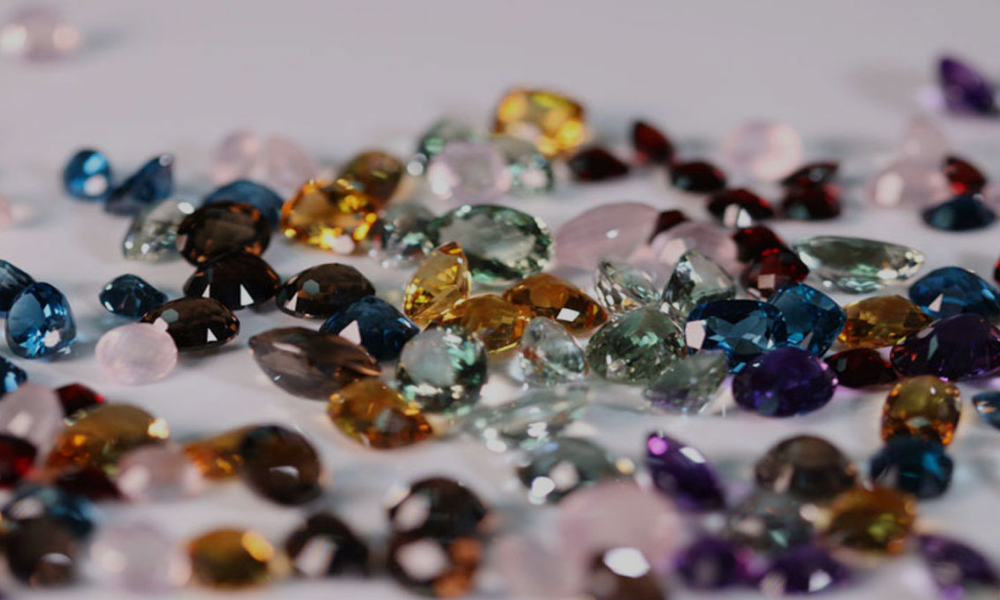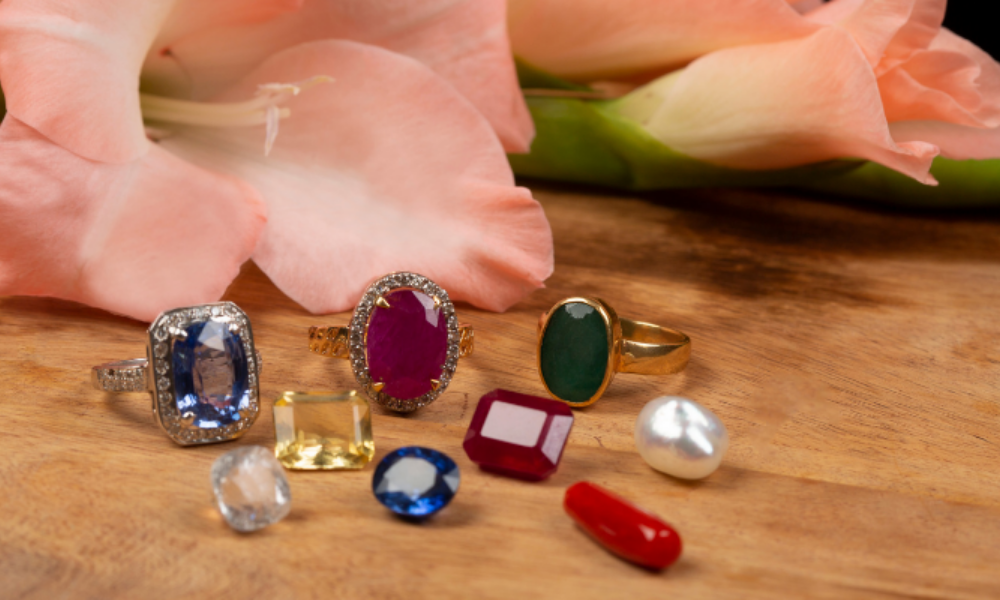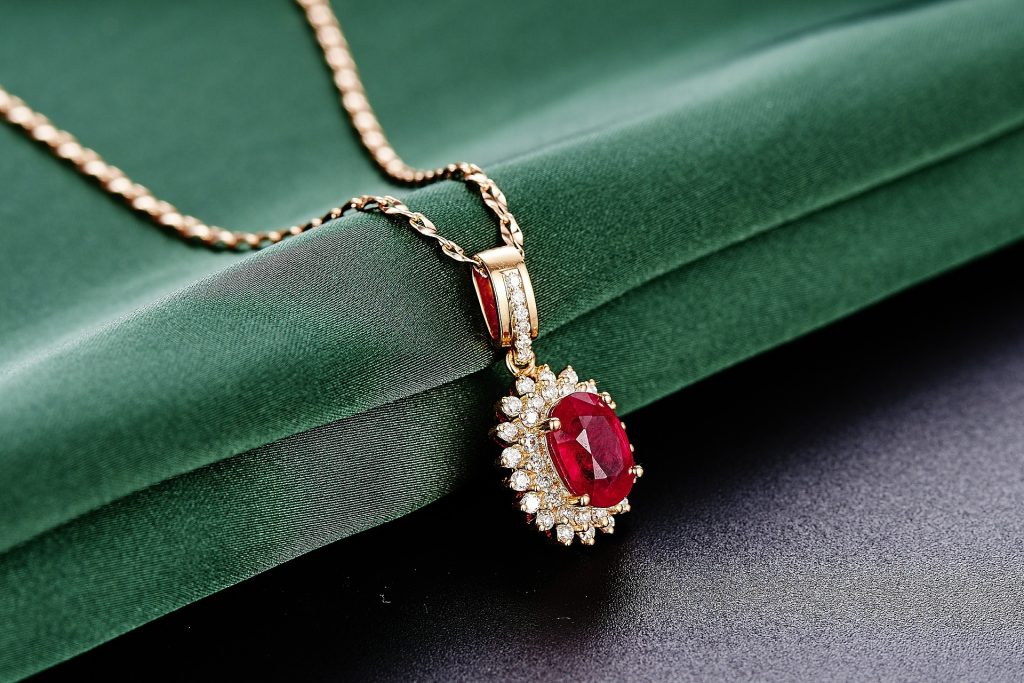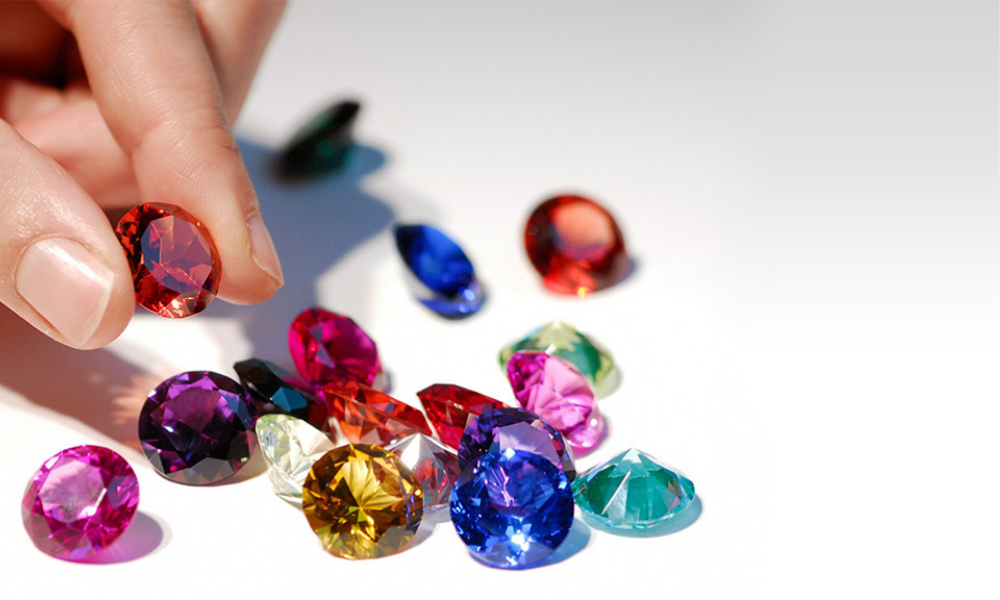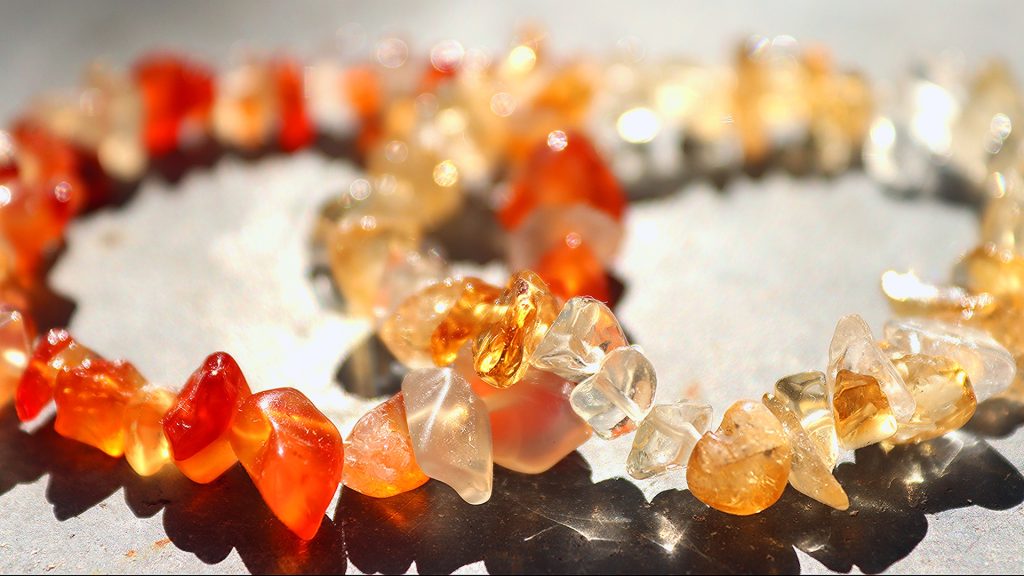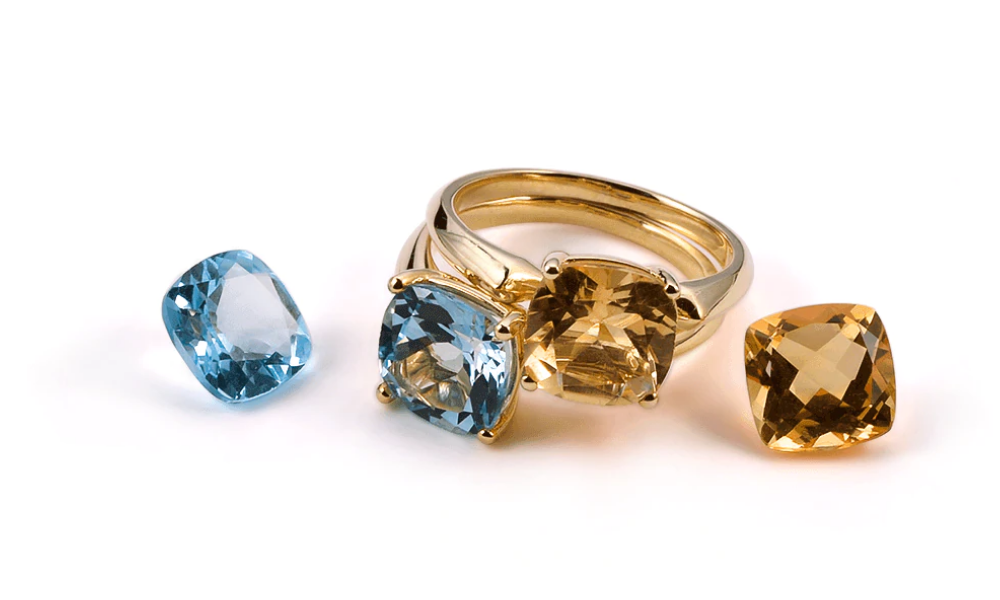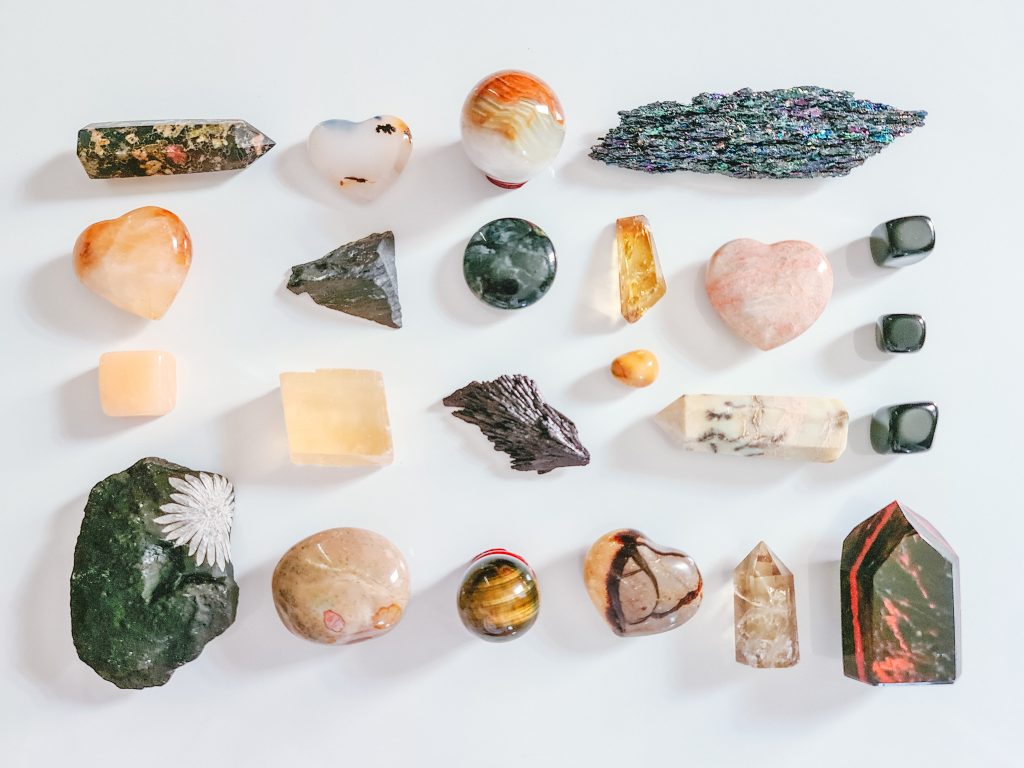Gemstones are minerals, rocks, or organic materials that have been selected for their beauty, durability, and rarity and then cut or faceted and polished to be used in jewelry or other human adornments. Even though most gemstones are hard, some are too soft or fragile to be used in jewelry, and as a result, they are frequently shown in museums and sought after by collectors.
Jewels have been at the center of human fascination for thousands of years. People are drawn to them by the brilliant colors, glittering sheen, and intriguing traits that they possess. However, the beauty of a precious diamond is not the sole incentive to invest in one, and it extends beyond the physical characteristics. Despite the superstitions and stories linked with gemstones, a great deal of scientific evidence and study supports the benefits of these precious stones.
What are Gemstones?
The vast majority of gemstones are minerals. However, some, such as pearls and coral, are biological. Gemstones are essentially the crystal structure of a chemical compound composition found in rocks, and they are used to make jewelry. Organic gemstones can be found in plants and animals, although most commonly discovered in seawater. It is feasible to identify gemstones based on their hardness, crystallization, and optical properties, but it is not possible to judge them without advanced inspection procedures. It is a gift from nature, and as a result, it possesses enigmatic inherent abilities inside it. On the other hand, natural gemstones are incredibly scarce and expensive, making it nearly difficult for the average person to obtain a pure natural gemstone due to the high cost.
Gemstones Formation
The majority of gemstones are formed as minerals under various conditions in the rocks of the Earth’s crust, with only a small number of jewels forming in the mantle. The crust comprises three types of rock called igneous, metamorphic, and sedimentary rock geology. All gemstones are found in the Earth’s crust, where they are mined. After mined, they are usually taken to a lapidary, where they are cleaned to the final stage. This may entail grinding away the matrix or rock in which the gemstone was buried, followed by the cutting or faceting of the gemstones and the polishing of the jewels. A gem, or a jewel, is a gemstone that has been cut and polished to a high shine.
How Does Gemstone Work?
After gaining a grasp of how gemstones function, the first thing that a buyer should realize is that gemstones are not magical treatments.
Gemstones operate based on the transmission of wavelengths specific to a particular planet and its orbit.
To automatically rectify any shortfall in planetary rays at the time of birth, gems are worn to draw additional energy from the various planets they represent. A weak planet becomes more potent by the additional energy drawn from the planets they represent. As a result, if a planet is benevolent but weak, one should wear the diamond associated with it to provide it with the necessary strength. For example, if the Sun is weak in a person’s horoscope, that person should wear Ruby because the gemstone for the Sun is Ruby. A Ruby will absorb and transmit the Sun’s energy to the wearer’s body, strengthening it, i.e., it will become strong and improve the results that the Sun provides to that particular native in that particular location.
When we wear a gemstone, it increases the absorption of cosmic rays from the planet it symbolizes – keep in mind that cosmic rays are different from light rays, increasing our overall health. The increasing absorption of cosmic rays causes changes in the AURA, which is our natural shield against the Sun. It is our AURA that changes, and it affects our body, conscious and subconscious minds, as well as the people we think of and the people who think of us. The influence of a Gem on our destiny begins to manifest itself after 30 to 40 days of wearing it.
Gemstone Color
Gemstones vary in their aesthetic appeal, and many are available in a breathtaking array of hues and colors to suit any taste. But, in their natural condition, most gemstones are merely ordinary rocks or pebbles; however, after careful cutting and polishing, the full color and shine of the gemstone are revealed. Generally speaking, gemstones with clear, medium-tone, vivid, and saturated primary hues are the most sought-after types of stones.
Gemstones Clarity
Gemstones are produced deep inside the Earth’s crust and may contain traces of other minerals, known as inclusions, present in the stone. Inclusions in stone can appear as little patches or defects within the stone’s surface. Inclusions can identify gemstones and even determine whether a stone is natural or fabricated in some instances. Emeralds, for example, are more likely than other gemstones to include inclusions. Another group of gemstones, such as aquamarine and topaz, is characterized by having extremely few inclusions if any at all.
Gemstones Cut
How a gem is cut can enhance the natural beauty of the stone. There are two fundamental types of gem cuts: cabochon and faceted. Cabochons are round gems, and faceted gems are square gems. The cabochon cut is characterized by a smooth rounded top and a flat base, and it is primarily used for transparent or translucent softer gemstones that are opaque. Stones were cut exclusively with cabochons until the development of faceting in the 14th century, at which point faceting became common.
Faceting is the act of cutting a gemstone to enhance its beauty by increasing the amount of light it reflects. The faceted cut is characterized by many flat cut surfaces (facets) and an overall shape that can be round, oval, square, or other shapes. Only the more demanding gemstones are capable of becoming successful facets. A gem, or a jewel, is a gemstone that has been cut and polished to a high shine.
Gemstones Carat
The gemstone’s weight is measured in carats (5 carats equals 1 gram of gemstone weight). It’s crucial to understand that some gems are denser than others in terms of density. For example, a one-carat ruby (which is highly dense) will be smaller than a one-carat emerald (less dense). Furthermore, the value of different varieties of gems that are of equal size might nonetheless be very different.
Gemstones Hardness
The hardness of a stone is the only factor influencing the durability of a gemstone. Indicators of scratch and abrasion resistance and how the surface of the gem will respond when it comes into touch with a sharp edge are included in this section. Using a relative scale ranging from 1 (softest – Talc) to 10 (most intricate – Diamond), the Mohs Scale determines the hardness of gems and minerals. The scale was developed by Friedrich Mohs, who chose ten minerals and assigned numbers to them depending on how easily or difficultly another might scratch them. It was first used in 1822 and has been in use ever since.
Species and Varieties of Gemstones
Many different types of gemstones are classified as belonging to groups or species that have a similar crystal structure and chemical makeup to one another. Beryl, corundum, garnet, quartz, and tourmaline are only a few of the gemstone species essential in jewelry design. In addition, each species may have one or more variations, each of which has a distinct coloring or feature combination. For example, the species corundum includes the gemstones ruby and sapphire among its members. Not every gemstone variation belongs to a category, and many are distinct varieties with no qualities typical to any other type of gem. For example, peridot, zircon, topaz, and spinel are gemstones.
Social Belief for Gemstones
Communities and cultures worldwide have varying levels of confidence in these stones, which are claimed to protect against evil spirits or ghosts, treat chronic ailments, keep children safe, and assist with a variety of problems in people’s lives. Whatever the cause, jewels have held a particular position in human history since time.
What’s the Best Way to Use Health-Beneficial Gemstones?
As part of their spiritual rituals, some people make use of gemstones. It is common for them to include gemstones in ceremonies to heal energy fields, attain peace, and encourage love and safety. According to some religious beliefs, practitioners physically lay gemstones on specific body parts to aid healing. On the other hand, the majority of people are content with simply wearing a piece of jewelry that contains a specific gem, and the gem doesn’t need to come into direct touch with your skin.
Generally speaking, most gems are safe to use as gemstones in jewelry. (Of course, some are more long-lasting than others. ) The presence of heavy metals and radioactive elements in trim levels in a few gems, such as realgar and ekanite, may pose a threat if the gem is worn. Likely, any health benefits you would obtain from close, prolonged exposure to such stones surpass any risks you might face.
Some crystal healers use gems to manufacture potions or implant gems in their patient’s mouths. Any acid-soluble stones should be avoided in these situations, even if they do not contain any recognized harmful compounds. The impurities in these gemstones may cause your stomach acids to react hazardously.
Do Gemstones Work?
Yes, they do 90 percent of the time. When the other 10% don’t, it’s usually due to a failure to follow the norms and rituals of wearing an astrological gemstone. Gemstones use color therapy and inherent energies.
Gemstones only work if you wear them in their natural state, which means that wearing only natural, untreated stones will allow you to access the divine energies that these stones offer. Gemstones can help you boost your luck. The position you in the appropriate location at the appropriate moment. If you still don’t believe in fate, close your eyes and imagine someone who has gotten more than they deserved or worked for.
How Long Does it Take for Gemstones to Work?
After 10-15 days of wearing a high-quality gemstone, you will notice a difference in your appearance. It may begin to provide minimal results before this time frame. Over up to 5 years, the gemstone continues to give remarkable outcomes.
What are Some of the Advantages of Wearing Gemstones?
Individuals who believe in gemstones have long utilized them as a vital tool; if you are one of these people, stay with us as we highlight the essential benefits of gemstones and how to pick the ideal one for you:
Healing and Detoxification of the Body
The therapeutic properties of gemstones such as garnet, aquamarine, and bloodstone are widely believed. It has been stated that these stones might stimulate the production of positive energy in your body, allowing it to recover and become stronger from the inside. They are also thought to have purifying effects for the person who wears them since they aid in eliminating accumulated lousy energy that has developed in the body. Within a few days of wearing a gemstone on your wrist or hanging it from a necklace, you may notice a marked improvement in your mood.
The Use of Gemstones in a Sustainable Way
Wearing gemstones as accessories is one of the most convenient and pleasurable ways to incorporate them into your life. Ideally, it should be worn around the neck. A gemstone necklace allows you to allow positive energy to radiate from your body in all directions, making it easier to boost your overall aura due to wearing the necklace. Because these stones are immortal, they will remain with you for as long as you wish to retain possession of them. Every day of the week, you are welcome to wear your gemstones as jewelry to improve your spiritual and physical health at the same time.
Astronomy and Soothing Beliefs
Have you ever heard of the practice of placing a gem on a specific body part to concentrate the therapeutic abilities of the gem on that particular body part? If you haven’t already, give it a shot. According to astrology, wearing the appropriate gemstone for your zodiac sign will assist you in absorbing more relaxing energy from nature. They also believe that wearing stones like sandalwood, pearl, and hematite can help to alleviate anxiety and concern.
Conclusion
Gemstones can protect you from evil and transform your life for the better. They WORK, and it is risk-free to place your faith in gemstones. However, it is up to you, the user, to ensure that it is used correctly and that you choose better dealers and astrologers to receive a better recommendation.
A gemstone is a mineral crystal, non-crystalline material, or biological material prized for its beauty and uniqueness, and it is used to make jewelry. A noncrystalline material that has been polished to a bright, shining surface is what a gemstone is usually made of. For the same reasons, some of these materials are also used to create jewelry. A significant aspect of increasing the value of these commodities is their scarcity.

